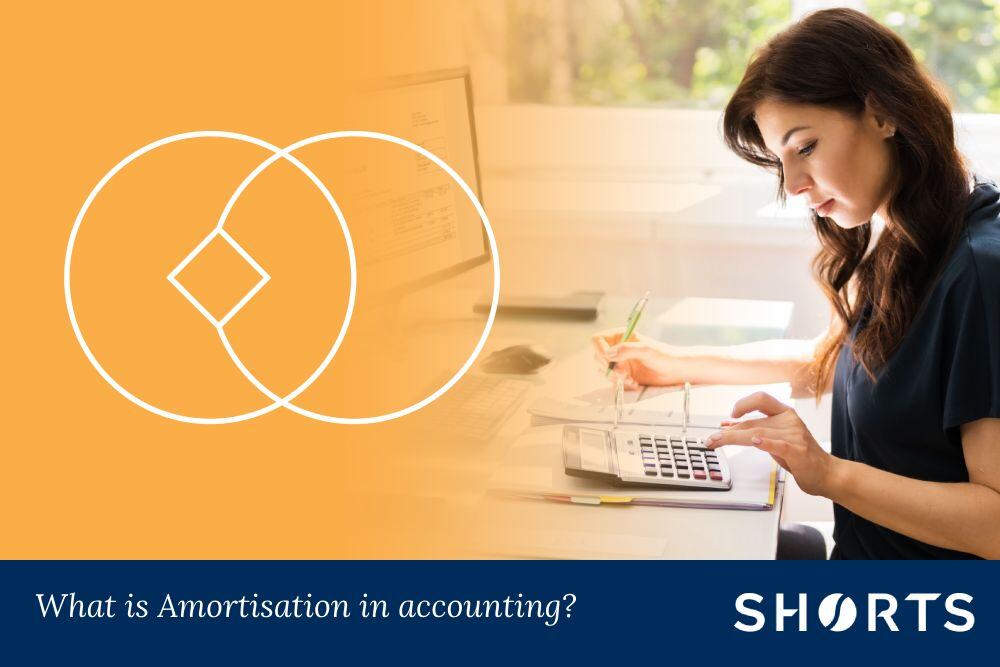
Business accounting and finance is full of jargon. Key terms and concepts that aren’t well explained can lead to miscommunication, misunderstandings, loss of control, and missed opportunities.
So, as part of a new jargon-busting series – we’ll be taking you through some of the most commonly employed jargon in accounting, starting with amortisation.
What does amortisation mean?
In accounting, amortisation is the process of reporting the cost of an intangible asset over the estimated duration of its useful life, not as a single upfront expenditure. It means the payment is made, but the cost is accounted for in instalments.
This is done for several reasons, which will be outlined below. Amortisation is typically used when the asset's useful life is limited (such as several years).
What is an intangible asset?
Unlike tangible assets, like buildings and machinery, intangible assets are non-physical assets with value from their rights or benefits. Intangible assets include patents, copyrights, trademarks, goodwill, and leasehold improvements.
Are all intangible assets subject to amortisation?
Not all intangible assets are amortised if they have indefinite useful lives. Those assets are not amortised but are tested for impairment annually to ensure they are held at the correct value.
What is the purpose of amortisation?
Amortisation helps businesses match the expense of using an asset with the revenue (or benefit) it generates, providing a more accurate picture of a company's financial performance by spreading the cost of the intangible over its useful life.
Without amortisation, the cost of an intangible asset would not be spread out over its useful life. This could result in overstated profits, as the total cost of the asset would not be recognised as an expense.
Crucially, failing to include amortisation in financial reporting could violate accounting standards and regulations, potentially resulting in fines or penalties. It could also result in the failure of a statutory audit.
What is the amortisation process?
When accounting, amortisation typically includes the following steps.
-
Consider the initial cost of the intangible asset, factoring in the purchase price, legal fees, and associated expenses.
-
Determine the estimated useful life of the intangible asset. This is the period over which the asset is expected to provide economic value or benefits to the business.
-
The cost of the asset is then allocated over its useful life period. This results in an annual amortisation expense recorded on the Profit & Loss Report.
A quick example of amortisation
Suppose you acquire an intangible asset, such as a patent. The patent costs £40,000 and is valid for 10 years.
This will give you £4,000 of amortisation per year for the 10-year useful life of the patent. The patent cost of £40,000 is divided into 10 years (or 10 separate reported expenditures).
This gives a more accurate picture of how much the asset costs you each year rather than recognising the entire cost in the year of purchase.
Amortisation does not change the actual cost of the intangible asset – it only spreads that cost over the asset’s useful life for reporting purposes. You would still be paying £40,000 for the asset at the time of purchase.
What is the “useful life” of an intangible asset?
The useful life of an intangible asset, such as a patent, copyright, or goodwill, estimates how long it is expected to provide economic benefits to a company.
The useful life of an asset can be affected by its type, the industry in which it operates, and legal or contractual terms. Technological advancements could also change the useful life of an asset if they render it obsolete.
Can amortisation be changed after it begins?
Amortisation schedules can be changed if there is a significant change in the asset’s useful life or its residual value. This change is considered a change in accounting estimate and is applied prospectively.
How is amortisation reported in financial statements?
Amortisation expense is reported on the Income Statement as part of operating expenses. The accumulated amortisation is reported on the balance sheet as a deduction from the intangible asset's value.
Does amortisation affect cash flow?
Amortisation itself does not affect cash flow because it is a non-cash expense. However, it reduces the net income, which in turn affects the cash flow from operations indirectly when calculating the operating cash flows using the indirect method. Our guide on EBITDA explains how amortisation impacts earnings in more detail.
What is impairment?
There may be occasions when an asset is worth less than what it is recorded for on a company balance sheet. This is known as impairment. In other words, impairment is when an intangible asset's carrying value (the asset's cost minus accumulated amortisation) has exceeded its recoverable amount.
If an intangible asset is deemed to be impaired, the company must recognise it as an impairment loss (reducing the asset's carrying value to its “recoverable amount”) and adjust future amortisation (the remaining useful life of the asset may need to be reassessed).
The “recoverable amount” is whichever is higher out of:
- The price that could be obtained from selling the asset
- The present value of the future cash flows expected to be derived from the asset.
Accounting for intangible assets must consider impairment to ensure the assets are carried at their recoverable amount. This provides a more accurate representation of the company's financial position.
What is the difference between amortisation and depreciation?
Amortisation and depreciation are similar concepts that involve the systematic allocation of an asset's cost over its useful life.
Amortisation applies to intangible assets such as patents, trademarks, and goodwill, whereas depreciation is specifically used for tangible assets like buildings, machinery, and vehicles.
This distinction is important because it reflects the differing nature of these assets and how their values change over time. Intangible assets lose their value over time due to obsolescence or legal limits, whereas tangible assets experience wear and tear or become outdated.

Alicia Williams
I am the Director of the Genus team at Shorts, a chartered certified accountant and Xero specialist. I specialise in cloud-based accounting solutions, particularly Xero and add-on software, helping clients streamline processes and improve efficiency. As a Client FD, I work closely with businesses to give them a clear understanding of their current position and support their long-term planning and growth.
View my articlesTags: Accountancy Services


